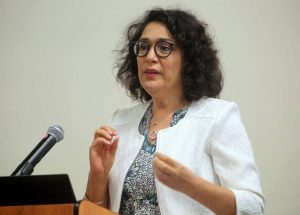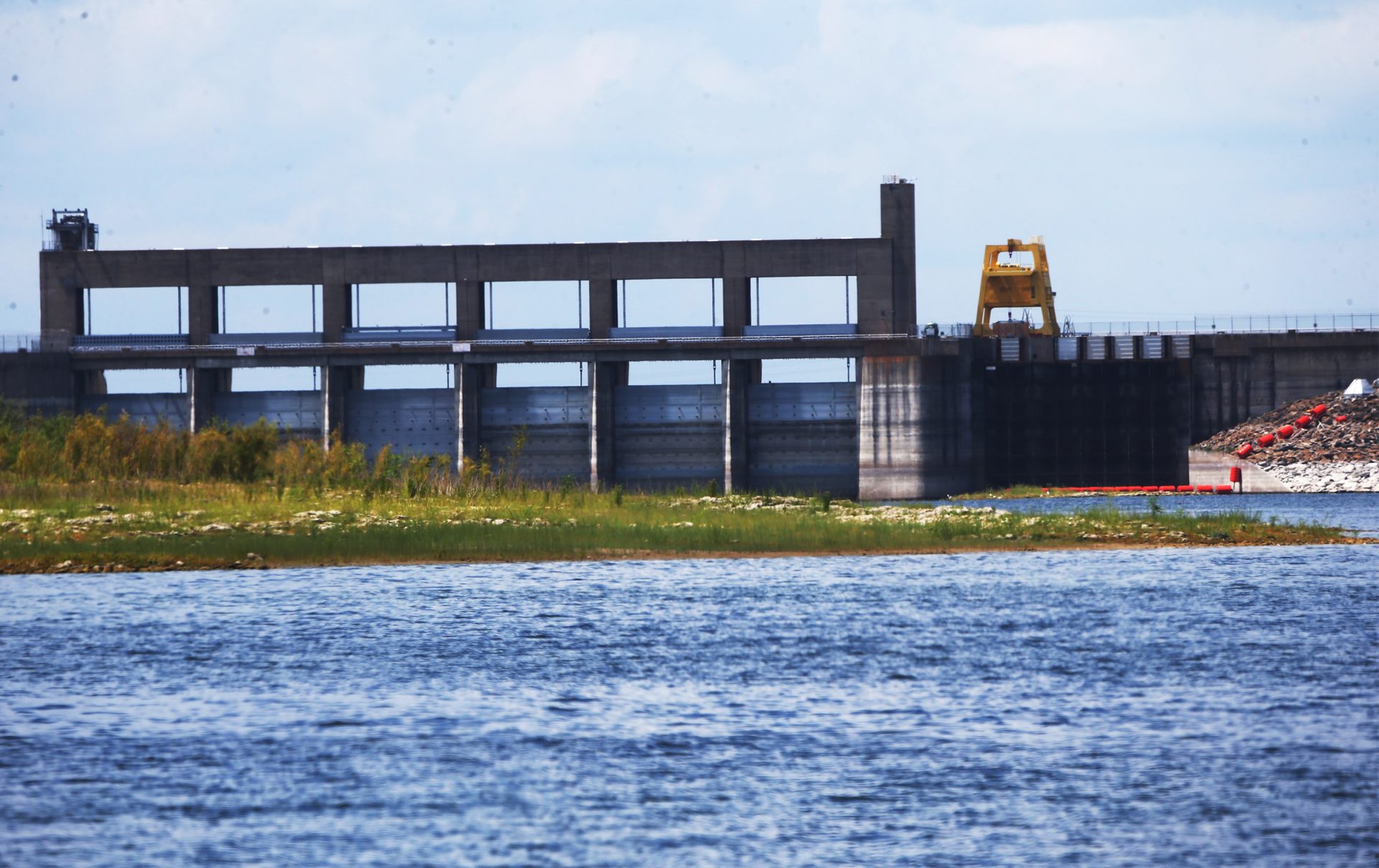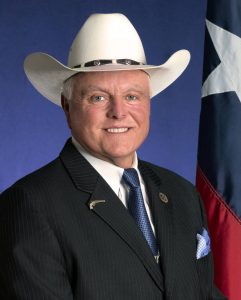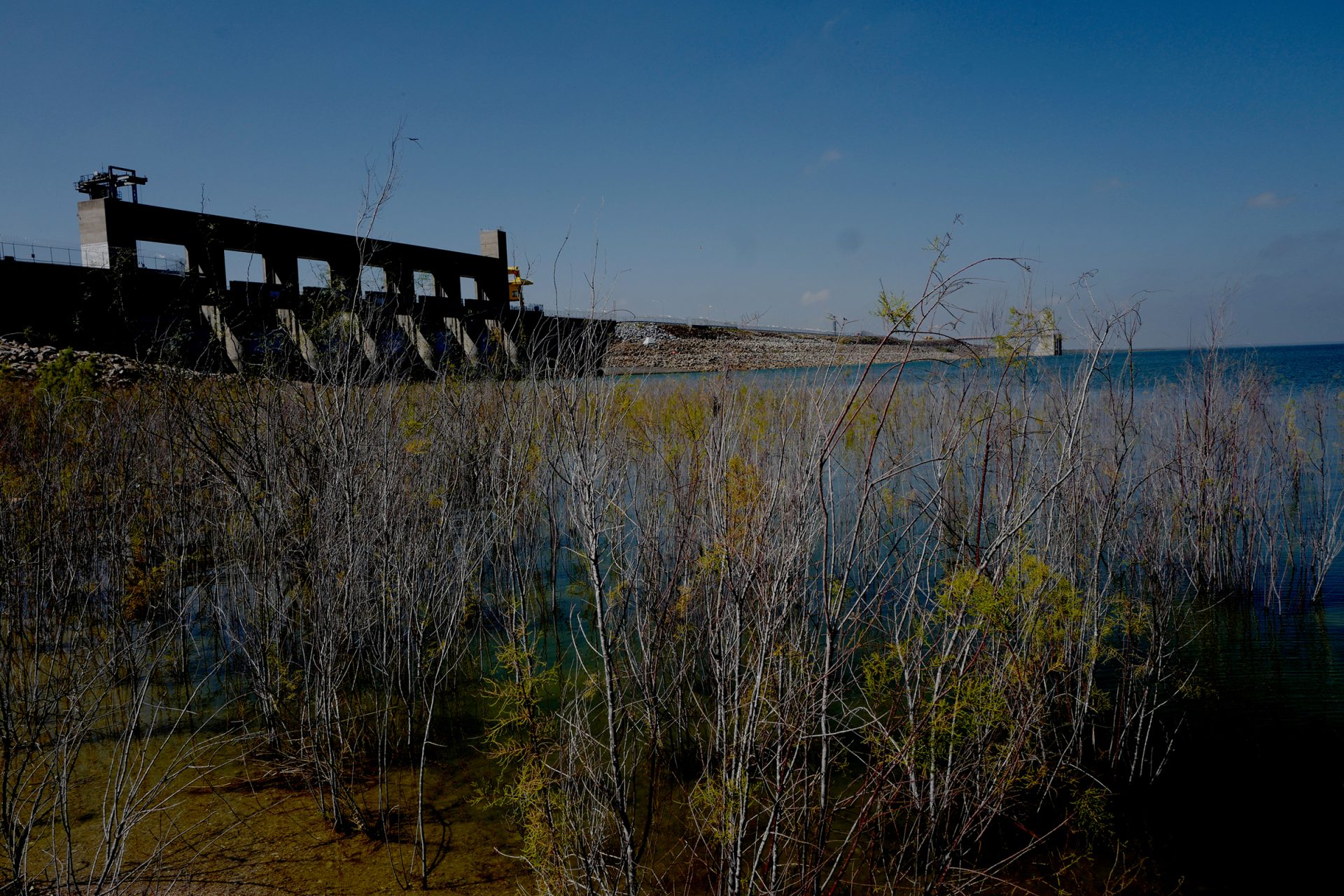|
Only have a minute? Listen instead
Getting your Trinity Audio player ready...
|

MERCEDES — For a growing number of Rio Grande Valley farmers, years of water scarcity fueled by drought and the unpredictability of Mexican water deliveries has depleted their water accounts.
As the availability of that agricultural water has diminished, it has begun to put a burden on municipal water suppliers, who depend on ag water to carry city water across hundreds of miles of irrigation canals to municipal water treatment plants.
Without irrigation water to serve as a vehicle, not only do municipal water costs go up, but less water winds up making it to Valley cities.
So, when Maria-Elena Giner, commissioner of the U.S. International Boundary and Water Commission — the federal agency tasked with enforcing a 1944 binational water sharing treaty with Mexico — announced she had news from Mexico, there was a sense of hope.
Last Friday, Oct. 18, Giner traveled to San Benito, along with Bobby Janecka, commissioner of the Texas Commission on Environmental Quality, or TCEQ, to meet with a gaggle of irrigation district managers, farmers and a handful of state lawmakers. TCEQ is the state agency responsible for managing Texas’ water supply — its rivers, aquifers and other water sources.
Under the terms of the 1944 treaty, Mexico is obligated to deliver some 1.75 million acre feet of water to the Rio Grande over the course of a five-year cycle.
The water benefits American water consumers from Amistad International Reservoir south to the Valley. But it also benefits border communities in the northern Mexican states of Tamaulipas and Nuevo Leon.
Friday marked the end of the fourth year of the current treaty cycle and, thus far, Mexico is almost that far behind in making its deliveries. It is currently in arrears by just over 975,000 acre feet of water.
Realistically, there’s no way for Mexico to resolve that deficit by this time next October, the deadline for the 2020-25 cycle.
It’s a daunting reality that has some water managers here warning of the potential for a “humanitarian crisis,” especially if long-range weather patterns continue to spell dry, hot months well into 2025.
But Giner came to the Valley last week with a message she said made her “hopeful.”
One year after Giner had delivered a proposal to Mexican officials that would have allowed for a substantial amendment to the interpretation of the 1944 treaty, and one year after those same officials had left her hanging on the eve of the signing ceremony, the IBWC commissioner had been given a new offer.
While rains failed to materialize over the Mexican Chihuahuan mountains this year, over the summer, some rainfall did fall over the southern portion of the Rio Grande’s watershed. That, in turn, led to the overfilling of Mexico’s two southernmost dams — the Rio San Juan’s El Cuchillo and Marte Gomez dams.

But the Rio San Juan spills into the Rio Grande south of Falcon International Reservoir, meaning there’s no way for either border Mexican or American water users to capture it and store it for later use.
The treaty doesn’t allow for inflows from the Rio San Juan to be used in the tally of Mexico’s water deliveries.
Mexico can hold onto that floodwater — for a little while, at least — before releasing it to flow into the Gulf of Mexico.
And that’s what Giner came to announce.
Mexico was willing to hold onto that floodwater — up to 125,000 acre feet — for the next 10-11 months and to release it at the convenience and call of American water users.
In exchange, they wanted that 125,000-acre-foot volume to be credited to the current treaty deficit.
“They understand that we are watching very closely how they’re going to at least try and mitigate some of that shortfall that they have right now, they have made a very good offer to us — what I feel is a very good offer to us,” Giner told The Monitor in an interview last week.
The IBWC commissioner hoped that the water could help local farmers plan for upcoming crops because it would be a known quantity that could be delivered on their schedule.
One day before Giner’s visit, Texas Agriculture Commissioner Sid Miller issued an executive order giving “Texas farmers and ranchers the green light to tap into the Rio Grande for irrigation,” according to an Oct. 17 news release.

“We’re done sitting around waiting for someone else to act,” Miller stated in the release.
“There is no reason the water overflow… should go down the Rio San Juan to the Rio Grande to be wasted. The water belongs in the hands of those who need it most, not lost in the Gulf,” he further stated.
Between Mexico’s offer and Miller’s declaration, it seemed a solution — or at least a temporary reprieve — was at hand.
Speaking after last Friday’s stakeholder meeting, however, Janecka, the TCEQ commissioner, cautioned local water managers that taking the water would be illegal.
“Water rights on the Rio Grande are governed by Chapter 11 of the Texas Water Code and the TCEQ’s regulations, including the authority of the Rio Grande watermaster,” Janecka said.
“All water users along the Rio Grande should continue to comply with these requirements,” he said.
State law mandates that water rights holders maintain accounts — akin to a checking account at a bank — that are managed by the TCEQ.
In the Rio Grande Valley, the Falcon and Amistad reservoirs serve as the “bank” where those accounts are stored and tracked.
As Janecka explained to the stakeholders last week, if they wished to take Mexico up on its offer, then those water volumes would need to be debited from their accounts — regardless of any go-aheads from Miller, who doesn’t have the state constitutional authority to make such executive declarations.
Nor does Mexico have the authority, under the treaty, for San Juan inflows to count toward its water delivery obligations.
The offer of free water was quickly becoming a mirage — visible, but just out of reach and untouchable.
“Our system doesn’t function the way that this offer supposes, in that if we accept credit below Falcon and Amistad we have a hiccup of not being able to put those deliveries of water into the bank accounts that our users call upon and draw on,” Janecka said.

The commissioner added that accessing that water could lead TCEQ to consider “enforcement discretion.”
But some local water experts dispute Janecka’s assertions that TCEQ doesn’t have the ability to properly account for Rio San Juan water.
Several corners of state law — as well as a precedent from 2015 — gives the state agency the authority to declare that water as “no charge” — meaning it can be freely taken without impacting a water rights holder’s water account, according to Sonny Hinojosa, water advocate for Hidalgo County Irrigation District No. 2.
“TCEQ has the authority to designate this water as no charge, and then we will pick that water up. We’d be picking it up right now if we could. But, they want to charge our accounts,” Hinojosa said Thursday.
Hinojosa further explained that, even if local farmers agreed to San Juan water flows being debited from their accounts, many farmers don’t have anything left to debit. And unlike a checking account, there’s no such thing as overdraft protection when it comes to water.
Hinojosa hopes an idea proffered by local farmer Tudor Uhlhorn might gain some traction though.
Uhlhorn was the last leader of the Rio Grande Valley Sugar Growers Association, which announced the cessation of the Valley’s 51-year history of sugarcane production in February.
At the conclusion of last Friday’s meeting, Ulhorn suggested that Commissioner Giner take a counteroffer back to Mexico — keep the 125,000 acre feet of Rio San Juan water and let Mexican users continue to access it.
Instead, transfer 125,000 acre feet of Mexican-owned water that’s currently stored in Falcon and Amistad to the United States.
That would solve the TCEQ’s accounting problem, Hinojosa said, because the water would be in the “bank” where TCEQ could properly track it.
It’s something Mexico has done before.

On Oct. 21, 2020, just three days before the last treaty deadline, Mexico made such a balance transfer to the U.S., which allowed them to conclude the five-year cycle in good standing.
But the treaty spells out that such an option only becomes available after Mexico has already defaulted on one treaty cycle.
In other words, Mexico can only exercise that option in a “second” cycle.
Currently, the 2020-25 cycle counts as a “first” cycle.
But even when that option opens up, it doesn’t solve every problem.
After Mexico transferred some of its water ownership to the U.S., those border states took the Mexican federal government to that country’s supreme court.
The Mexican high court found that the federal government had acted appropriately in making the balance transfer because it had complied with an option laid out in the treaty.
Hinojosa, the longtime water manager, said he doesn’t blame Tamaulipas for suing the Mexican federal government, or for being an integral part of why Commissioner Giner’s treaty amendment, called a minute, has not yet been signed.
“We can’t blame Tamaulipas for blocking this minute because it takes their water away,” Hinojosa said, adding that the Tamaulipan and Nuevo Leon stakeholders he’s spoken with felt abandoned when the U.S. agreed to the balance transfer in 2020.
For those dependent on the Rio Grande — regardless of what side of the border they live on — everyone’s in the same boat.




